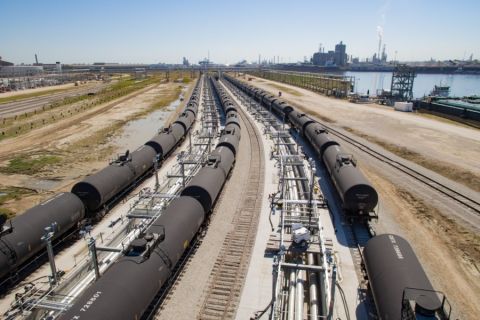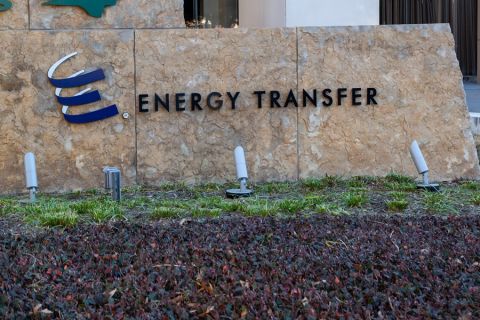By Chris McIntosh, ViaSat UK Like any industry, resource exploration and recovery is evolving as its environment, challenges, and opportunities change. However, one thing remains constant: at some point any extraction project will require boots on the ground. Whether exploring prospective claims or extracting established reserves in the Arctic, outback, rain forest, ocean, or Beverly Hills, workers in the field are an essential resource. These workers in turn need to be in contact with their colleagues back at head office. Previously a letter or telegraph may have sufficed. In the 21st century, with more information available to workers and organizations than ever, nothing less than uninterrupted broadband communication will suffice. These communication channels need to carry a wide range of information. Voice communications, GPS coordinates, surveillance video, and a multitude of E&P and other data need to flow both ways. This isn’t simply a luxury. Any break in communications or incomplete information can result in competitive failure and serious safety threats. As a result, providing a consistent high-speed connection to workers in the field is a holy grail for a large number of organizations. This has then raised the question of how to provide this coverage. Cable, particularly fiber optic, would provide the fastest speeds. Yet providing a cable connection to every possible location workers could find themselves is a wildly unrealistic prospect, especially when considering locations such as offshore platforms. Wireless or cellular connections are similarly limited. Workers must be within range of a suitable signal generator to benefit, again restricting them to those areas covered by networks. This leaves satellite broadband as the most reliable way to provide the communication workers need. Historically, despite its obvious advantages, there have been a number of perceived issues with satellite. However, it is very much a technology whose time has come. Risks Or Rewards? There have been a number of criticisms made about satellite broadband, some with more basis in fact than others. First, there is speed. A simple domestic fiber landline can offer connection speeds of over 160mbs; when faced with this a number of users may start to feel that other connection methods are somewhat constrained. Second, there is accessibility: not simply the challenge of transporting unwieldy communications equipment where it needs to go but the costs of providing a service that, as mentioned, might not match up to alternatives. Third is consistency of service: organizations cannot rely on communications that they believe could be lost in heavy weather or other atmospheric conditions. Fourth, and last, is security: any organization will understandably be unwilling to share its business sensitive information over any channel that could be compromised. However, these dangers are often overstated. How Much Is Enough? While a satellite connection is unlikely to provide 160 mbs to any location – in general this is far more than any organization needs – sharing data, communicating, and offering live video can be done on a fraction of this. Current high-speed satellites use Ka-band frequencies, covering a narrower area with much higher connection speeds than the older Ku-band technology. As a result, speeds of 12 mbs or more are quite attainable. While workers won’t be streaming high-definition, 3-D, 60 frames-per-second live video, they can still make sure that all the information they need, from voice comms to video feeds to production and research data, is shared quickly. Less Than You’d Think When people count the costs of satellite, it is often an unfair comparison. It is placed alongside land-line or wireless services that are often heavily subsidized by governments or individual service providers. Even so, the comparative costs are falling all the time. Currently, a high-speed home satellite service costs around US $50 per month, offering the same capabilities as an ADSL service for a similar price. Since satellite is not simply piggybacking on existing infrastructure as other communications do, there is also a cost involved in obtaining the transmission and reception technology required and transporting it to the relevant site. However, this infrastructure is still relatively low-cost, certainly compared to laying a dedicated cable or building a wireless or cell transmitter. Equipment is also becoming much smaller. Ka-band transmissions require a dish less than a foot across, making transport and setup an easy process. Keep The Flag Flying One of the greatest fears for those in the field, regardless of their industry, is losing contact with home. In this sense, satellite is a lot more resistant than many might expect. While dishes may be knocked down by heavy weather or other unpredictable events, they are also easy to resurrect. As long as a satellite is still in the air, communication can be quickly re-established. This is often demonstrated during natural disasters such as Hurricane Sandy. When other forms of communication have been cut off by the force of nature, satellite links can be quickly set up in the affected areas. There is also a large degree of redundancy. While an area might only be served by a single fiber cable, there are 30 communications satellites over the Continental United States alone. The ownership of satellite also provides an extra degree of security for organizations. Other forms of communication will be owned by governments or other local bodies who may not always have an energy company’s best interests at heart. Satellite provides an alternative conduit which cannot be so easily cut off by a third party. Secure Beneath Watchful Eyes Lastly, there is the issue of security. Satellite communications are essentially open. This is, after all, the principle that allows satellite TV to work. However, any communication is ultimately a balance between security and accessibility. The most secure conduit is a single, fixed link between two points that would be next to impossible to set up, maintain and guarantee assurance. Instead, organizations should assume that any means of communication they use can be compromised. Satellite is no exception. Before transmission, all data should be encrypted. This way anybody intercepting it will find it worthless. There are a number of tools available to encrypt (and decrypt) data in this way. Whichever solution chosen, organizations should ensure it is accredited to the appropriate level by a body such as FIPS. This will help provide peace of mind that the solution has already been tested and found acceptable to the relevant standard that organizations’ sensitive data requires. Going Nowhere It’s a simple fact that, in many locations from the Belize rain forest to the North Sea, satellite communication is the only method available to organizations. However, this doesn’t mean that they should resign themselves to a second-tier service. Regardless of location, workers need data and swift, reliable communications to do their jobs. Satellite is easily capable of meeting these demands. As long as organizations can look beyond often inaccurate stories and plan appropriately. Chris McIntosh is CEO of ViaSat UK.
Recommended Reading
Canadian Railway Companies Brace for Strike
2024-04-25 - A service disruption caused by a strike in May could delay freight deliveries of petrochemicals.
Report: Crescent Midstream Exploring $1.3B Sale
2024-04-23 - Sources say another company is considering $1.3B acquisition for Crescent Midstream’s facilities and pipelines focused on Louisiana and the Gulf of Mexico.
For Sale? Trans Mountain Pipeline Tentatively on the Market
2024-04-22 - Politics and tariffs may delay ownership transfer of the Trans Mountain Pipeline, which the Canadian government spent CA$34 billion to build.
Energy Transfer Announces Cash Distribution on Series I Units
2024-04-22 - Energy Transfer’s distribution will be payable May 15 to Series I unitholders of record by May 1.




